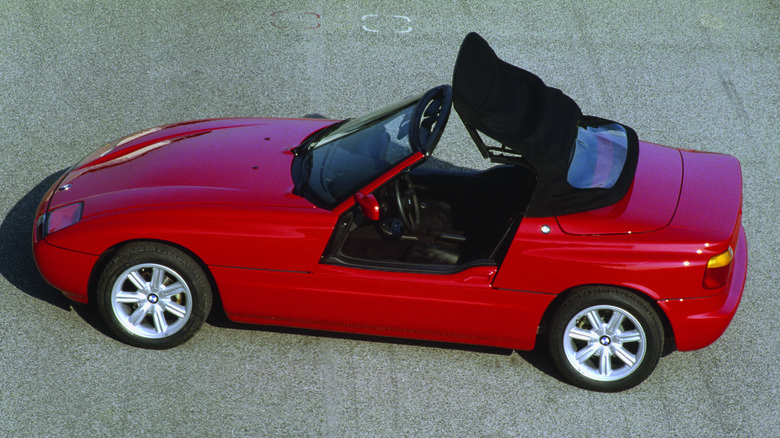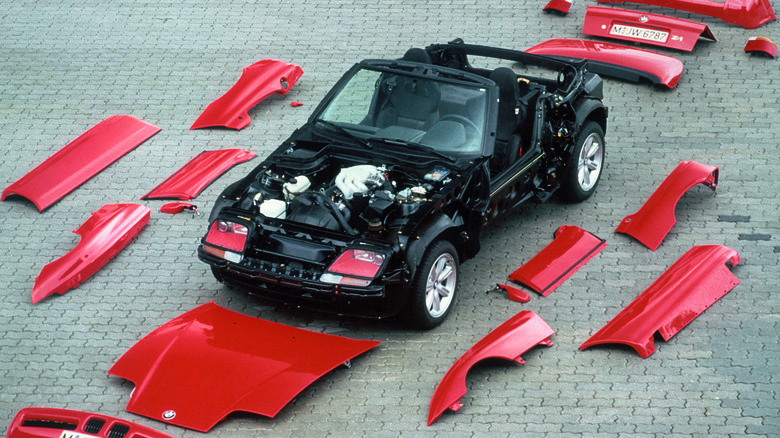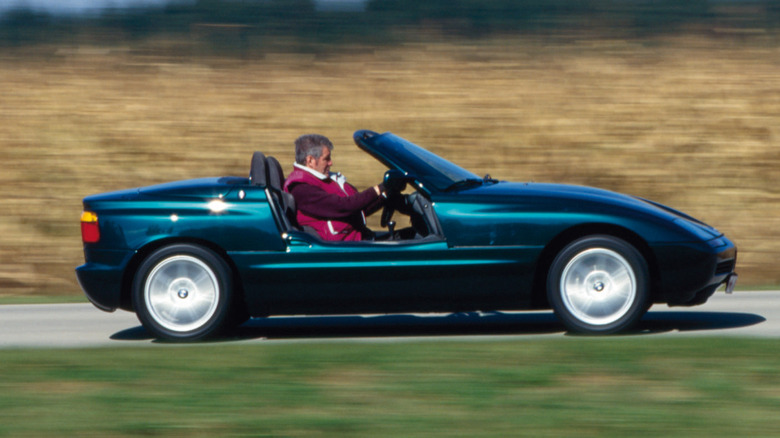BMW's Divisive Sports Car: How The Z1 Laid The Groundwork For The Z3
By the middle of the decade of excess in the 1980s, BMW had exploded into a tour-de-force among car enthusiasts with its Motorsports (M) series vehicles, such as the M5 — widely considered to be the pinnacle of sport sedans — and the M3 coupe with its unforgettable bulging fender flares. However, one thing the brand was sorely lacking was a roadster, since its model 507 was discontinued in 1959.
Already in development, Mazda's MX-5 Miata was positioning itself as the spiritual successor to such legendary roadsters as the MGB and Triumph's TR7 and Spitfire. Seeing this, BMW wanted a piece of the action and set its sights on a perceived resurgence in the roadster market.
The timing was fortuitous because BMW had recently formed its Technik division, a collection of innovative designers and engineers operating somewhat autonomously in a standalone facility several miles from the company's headquarters in Munich. Fittingly, the team's first project was the Z1 sports car. Though a fixed-roof coupe was designed in conjunction with the roadster, BMW elected to only move forward with the drop top.
It was filled with funky features
The vehicle that BMW Technik designed was indeed avant-garde, packed with quirky features such as removable composite plastic body panels. This allowed owners to purchase a complete duplicate set of body panels in an alternate color and switch them out at will.
BMW claimed that the color change could be accomplished in as little as 40 minutes, but an actual attempt by the British automotive show "Wheeler Dealers" took several hours. Interestingly, the Z1 was fully functional without any of the body panels installed, and could therefore be piloted like a giant go-cart.
Far and away, the feature that most gearheads recall about the Z1 was the method of "opening" the doors. Rather than swinging outward on hinges like most cars, or even scissoring upward like an exotic car, the Z1's doors retract vertically into the car's rocker panels using an automated system of electric motors and rubber belts. We know what you're thinking, and yes, the Z1 can (and should) be driven with the doors in the down position.
The Z3 was more traditional, but more popular
Under the Z1's bonnet things are more conventional, with a 2.5 liter straight six cylinder and five speed manual transmission, both pulled directly from BMW's E30 325i. With approximately 170 horsepower, the roadster scooted from 0-60 mph in about eight seconds, which isn't very quick by modern standards, but was respectable enough for the era.
The Z1 was constructed entirely by hand, making it both cumbersome to produce and expensive. How expensive? Approximately $55,000, which is equivalent to more than $130,000 in todays dollars. Only about 8,000 total were produced between 1989 and 1991, with nearly all cars sold on the European continent. A small handful have been imported to the U.S. now that they're old enough to qualify for the 25-year rule.
Still, the Z1 was a successful enough proof of concept for BMW to continue the Z lineage with the Z3 Roadster, a much more conventional design that debuted in 1996. One aspect that was copied from the Z1's playbook is that the Z3's powertrain was lifted straight from the 3-series.
Initially only an anemic four-cylinder was available, but more powerful six-cylinder engines were added later. The suspension came from the 3-series parts bin as well, with a combination of E30 and E36 components. Unlike the Z1, not only was the Z3 marketed for sale in the United States, but all Z3s for worldwide distribution came from BMW's factory in Spartanburg, South Carolina.


